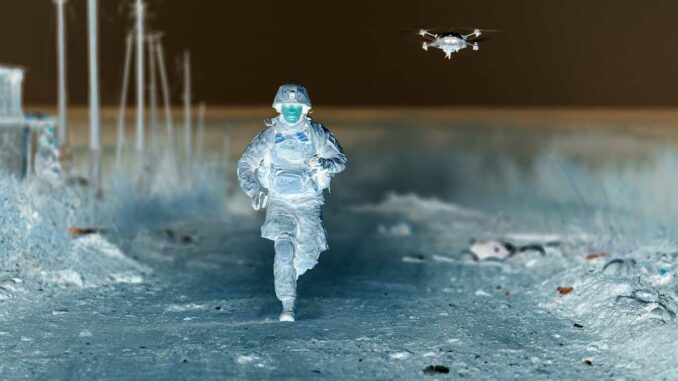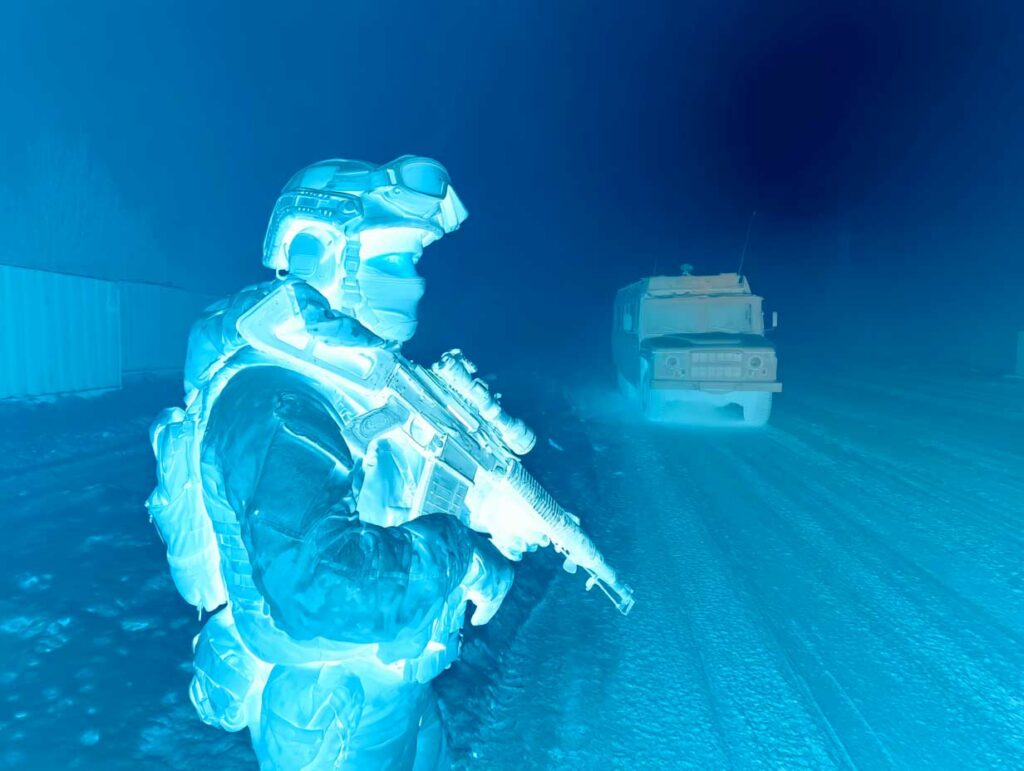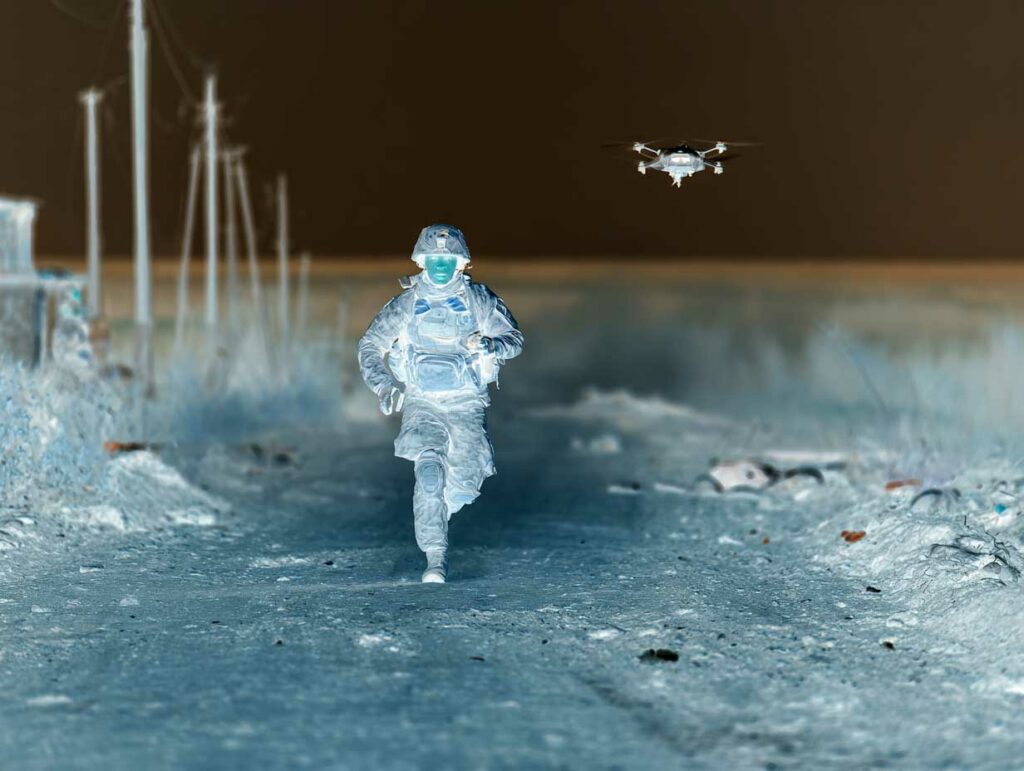
An Iranian Shahed-136 drone equipped with thermal targeting and onboard AI has been used in Ukraine, posing new tactical challenges.
The Ukrainian military has confirmed the identification of a new model of Iranian Shahed-136 drone, modified with a thermal camera and an automated targeting system powered by artificial intelligence. Designated Shahed-136 MS, this drone is equipped with four CRPA antennas to resist GPS jamming, a thermal vision module, and an Nvidia Jetson onboard computer. The aircraft is capable of identifying thermal or visual signatures on the ground without relying exclusively on satellite signals. This development is intended to counter the electronic warfare measures deployed by Ukraine. Kyiv believes that Iran is supplying these drones directly to Russia in exchange for Russian military equipment. This technical development marks a shift towards semi-autonomous drones, which are difficult to neutralize using conventional means.
An Iranian kamikaze drone with thermal guidance and AI reconnaissance
The drone found by the Ukrainian authorities belongs to the Shahed-136 series, widely used by Russia since 2022. This version, dubbed MS, incorporates significant technical modifications compared to previous models.
The aircraft has:
- a thermal vision module integrated into the airframe
- a visible camera, coupled with an Nvidia Jetson computer
- a set of four CRPA antennas for navigation
- an onboard algorithm enabling pattern or thermal signature recognition
The Jetson module is a low-power artificial intelligence platform, originally designed for robotic and industrial applications. It enables real-time local image processing. The Shahed-136 MS can thus adapt its trajectory based on visual or thermal elements identified on the battlefield. The goal is to improve the drone’s terminal accuracy without relying entirely on GPS signals, which are easily jammed or spoofed.
The presence of four CRPA (Controlled Radiation Pattern Antenna) antennas confirms this strategy. These antennas allow interference signals to be filtered out and the trajectory to be maintained even in an electronic warfare environment. This is a direct response to Ukrainian tactics, which rely on massive jamming of GNSS (Global Navigation Satellite Systems) signals.

A change of doctrine in Iranian drone design
Until now, Shahed-136 drones, with a length of 3.5 m and a wingspan of 2.5 m, were powered by a piston engine derived from civilian models. They followed pre-programmed trajectories based on GPS points, with little ability to change course once launched. This MS version, equipped with a visual recognition system, represents a conceptual shift: the drone can now adjust its target at the last minute, based on locally perceived data.
This development brings the Shaheds closer to more advanced drones such as the American Switchblade 600 and the Russian Lancet, which are capable of reacting in flight to changes in the tactical situation. The Shahed-136 MS is part of an autonomous targeting strategy based on searching for thermal or optical signatures of priority targets: armored vehicles, radar systems, and anti-aircraft batteries.
This type of aircraft does not require video feedback to the operator or external guidance. It can be launched from a truck or a fixed ramp, follow a general route, and then activate its final search over the last few kilometers. This is an important step towards “fire and forget” drones for ground targets, and no longer just for air-to-air missiles.
This final autonomy is valuable for penetrating heavily protected areas, where jamming, GNSS disinformation, or communications interception render conventional systems ineffective. Ukraine has Polish, American, and indigenous portable jammers deployed on the front lines.
Tactical impacts on electronic warfare and Ukrainian defense
The introduction of a drone such as the Shahed-136 MS raises concrete operational concerns. Its ability to locate a visual or thermal target without a GPS link makes it less vulnerable to conventional anti-drone systems. Many defense weapons in use today, such as the SkyWiper or Bukovel-AD, are designed to interrupt radio links, but not to intercept a fully autonomous drone in its terminal phase.
Militarily, this forces Ukraine to rethink its air defense priorities:
- Increase the use of conventional anti-aircraft artillery (30 mm to 57 mm cannons)
- Develop acoustic or thermal detection capabilities, as drones become silent and non-emissive during their final approach
- Strengthen the physical protection of targets (field hospitals, radars, SAM vehicles) using nets or structures resistant to downward attacks
The Shahed-136 MS appears to be designed to strike high-value targets, whereas previous versions mainly targeted civilian infrastructure (power plants, warehouses). The move towards smart targeting could reflect Russian-Iranian coordination on precision tactics, with gradual adaptation to Ukrainian defenses.
The estimated unit cost of a standard Shahed-136 drone is $20,000 to $30,000. The MS version, with a thermal sensor and Jetson, could cost around €40,000 to €50,000. This amount remains well below that of a cruise missile (≈€1 million), for potentially equivalent effectiveness in favorable conditions.

Increasingly integrated Russian-Iranian military cooperation
The appearance of this advanced model in Ukrainian skies suggests that Iran is no longer just supplying components or kits, but complete, ready-to-use drones with sophisticated integrated electronic modules. Kyiv suspects that recent deliveries were made without testing on Russian territory, which implies technical confidence in the maturity of the product.
Compensation in kind (drones in exchange for Russian weapons systems) appears to be confirmed. Several Ukrainian military sources claim that Iran has received Russian equipment:
- Tor-M1 or Pantsir-S1 air defense systems
- Yak-130 training aircraft
- components for ballistic missiles
This strategic cooperation is based on two factors:
- Iran is seeking to consolidate its own regional deterrence, particularly against Israel
- Russia is meeting its industrial needs in a context of sanctions and high attrition on the Ukrainian front
If this trend continues, Ukraine could face a wave of second-generation drones capable of identifying specific targets without human interaction. This would reduce the possibilities for early neutralization and require adapting not only defensive capabilities, but also the architecture of intelligence and electronic warfare.
War Wings Daily is an independant magazine.